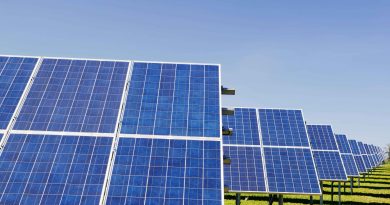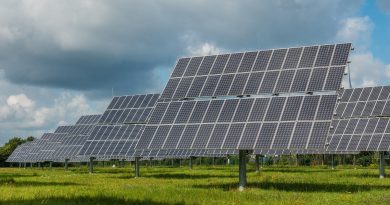Exploring the Grid-Connected Solar Rooftop System
Solar energy is rapidly gaining popularity as a clean and sustainable alternative to traditional sources of electricity. Among the various options available, grid-connected solar rooftop systems have emerged as a practical and efficient means of harnessing solar power. These systems, which combine solar panels, an inverter, and the local electrical grid, allow homeowners and businesses to generate their own electricity while also being connected to the main power supply. In this blog, we will explore the concept of grid-connected solar rooftop systems in detail, highlighting their benefits, components, and working mechanism.
What is a grid-connected Solar Rooftop System?
A grid-connected solar rooftop system, sometimes referred to as a grid-tied or on-grid solar system, is a photovoltaic (PV) power generation system that operates in conjunction with the local electrical grid. This system enables users to generate electricity from solar panels installed on the rooftop of a building, which is then used to power the building’s electrical needs as well as feed any excess power back into the grid.
Unlike off-grid solar systems that rely on batteries to store excess energy for use during low sunlight periods, grid-connected systems do not require energy storage solutions. Instead, any surplus energy generated during peak sunlight hours can be sent back to the grid, effectively allowing users to “sell” electricity to their utility providers or offset their electricity bills.
Components of a Grid-Connected Solar Rooftop System
To understand how a grid-connected solar rooftop system functions, it is important to familiarize ourselves with its key components:
1. Solar Panels: These panels, typically made of silicon-based photovoltaic cells, are responsible for converting sunlight into electrical energy. The number of solar panels required depends on the desired electricity output and the available rooftop space.
2. Inverter: The inverter is a crucial component that converts the direct current (DC) electricity produced by the solar panels into alternating current (AC) electricity, which is the standard form used in most appliances. In addition to this conversion, the inverter also optimizes the system’s performance and ensures safety by monitoring voltage levels and managing the flow of electricity.
3. Metering System: To accurately measure the electricity generated by the solar rooftop system as well as the electricity consumed from the grid, a bidirectional meter is usually installed. This meter allows the user and the utility provider to track the energy flow in both directions.
4. Mounting Structures: Properly mounting the solar panels on the rooftop is essential to ensure their longevity and optimum energy production. Various mounting systems are available, including fixed and tracking mounts, which allow the panels to follow the sun throughout the day for increased efficiency.
5. Grid Connection: The grid connection is made through a dedicated switch or a net meter, enabling the system to be synchronized with the utility grid. This connection ensures a seamless integration with the grid and allows for the exchange of electricity when needed.
How Does a Grid-Connected Solar Rooftop System Work?
The functioning of a grid-connected solar rooftop system can be summarized in a few simple steps:
Step 1: Solar panels installed on the rooftop capture sunlight and convert it into DC electricity.
Step 2: The DC electricity produced by the solar panels is directed to the inverter.
Step 3: The inverter converts the DC electricity into AC electricity, suitable for powering the building’s electrical appliances.
Step 4: The AC electricity is utilized to meet the immediate energy requirements of the building, reducing the dependence on the grid during daylight hours.
Step 5: If the solar rooftop system generates excess electricity, it is sent back to the grid through the bidirectional meter for credit or compensation from the utility provider.
Step 6: During periods of low solar generation, such as nighttime or cloudy days, when the rooftop system may not produce sufficient electricity, the building draws power from the grid as usual.
Benefits of Grid-Connected Solar Rooftop Systems
Grid-connected solar rooftop systems offer several advantages, making them an attractive choice for homeowners and businesses alike. Some key benefits include:
1. Cost Savings: By generating electricity from solar energy, users can significantly reduce their electricity bills. Excess electricity supplied back to the grid can be credited or monetarily compensated, further enhancing the cost-effectiveness of the system.
2. Environmental Impact: Solar energy is a clean and renewable source of power that produces zero greenhouse gas emissions. By opting for a grid-connected solar rooftop system, users contribute to the reduction in carbon footprint and help combat climate change.
3. Reliability and Backup: Unlike standalone off-grid systems, grid-connected systems provide a reliable power supply. If the solar panel output is insufficient, power can be drawn seamlessly from the grid, ensuring an uninterrupted electricity supply.
4. Supportive Policies and Incentives: Many countries and regions have implemented supportive policies and incentives to encourage the adoption of grid-connected solar rooftop systems. These may include feed-in tariffs, tax benefits, and subsidies, making the initial investment more financially viable.
Conclusion
Embark on a journey towards sustainable energy with SolarClue®! Explore the realm of grid-connected solar rooftop systems—effortlessly blending solar power with utility grids. From understanding net metering benefits to navigating government incentives, SolarClue® offers expert guidance. Our professional installations ensure a seamless transition to clean, cost-effective energy. Whether for your home or business, unlock the potential of continuous power, reduced bills, and environmental contribution. Contact SolarClue® today, and let’s illuminate a brighter, sustainable future together. Take the first step towards energy efficiency—choose SolarClue® as your trusted partner in grid-connected solar solutions.
Frequently Asked Questions
A grid-connected system is a solar setup that connects to the local utility grid, allowing seamless energy exchange between the solar panels and the grid.
During sunlight hours, the solar panels generate electricity, and any excess is fed into the grid. In non-sunlight hours, electricity is drawn from the grid as needed.
Not necessarily. Grid-connected systems typically don’t require energy storage, as they rely on the grid for continuous power supply.
Net metering allows users to receive credits for excess electricity they contribute to the grid, which can offset their future electricity bills.
Standard grid-connected systems shut down during outages for safety reasons. Hybrid systems with backup capabilities are recommended for uninterrupted power.
Installation times vary but are generally efficient. Professional installers, like SolarClue®, ensure prompt and seamless installations.
Absolutely. Businesses can reduce operational costs and contribute to sustainability by integrating grid-connected solar solutions.
SolarClue® guides users in maximizing benefits from available government incentives, making grid-connected systems financially appealing.
SolarClue® provides advanced monitoring solutions, enabling users to track and optimize system performance remotely for efficiency.
Yes, SolarClue® offers tailored solutions for residential and commercial spaces, ensuring efficient energy production to meet diverse requirements.




